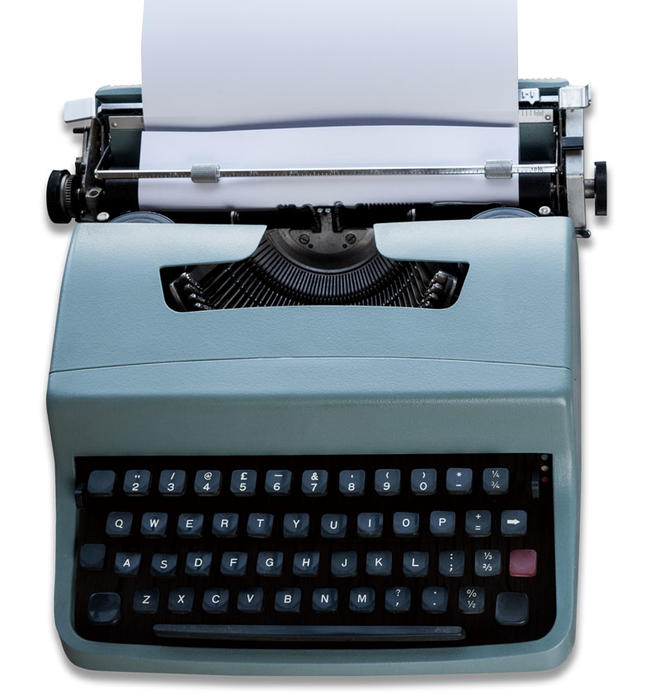
Remembering 185
The teacher’s advice: Write about what you know. And put a thought around that sentence!
Many Princeton memories are faint now, or gone altogether, but I remember so well walking to the old elementary school that we knew by its street address — 185 Nassau — for Creative Writing 201, a three-hour, Monday-afternoon seminar during the spring of my freshman year. My other classes that semester were bunched in McCosh and East Pyne — and so even the short trip seemed a small adventure. A crowd of after-lunch students walked that path, along William Street, and while most kept going, aiming for the EQuad straight ahead, another contingent — far fewer of us, and far less weighed down by books — would veer slightly left, just past the Thomas Sweet ice cream shop and into the side door of 185.
The building itself brought something different: a softer atmosphere, the faint odors of arts and crafts, clay and paint-thinner (ceramics and painting were taught here as well). There was the strong smell of mimeograph machines — and here, perhaps, we need an aside for younger readers: Back in the stone age of 1981, students typed stories on portable typewriters, using mimeograph paper, which would then be fed into hand-cranked machines that produced copies. We would write our stories — one was due every two weeks — and leave our purple-inked pages in a bin; it was our responsibility to retrieve each week’s packet, read through it, and return prepared to praise our fellow student writers or pick their work apart.
Come 1:30 each Monday, we were in a classroom that looked and felt more like a place where you might have had “rest period” in kindergarten. Couches, not chairs. No desks or lecterns. No assigned place for the teacher. Not even a blackboard. Shoes off, if we liked. Eight or 10 of us, at most.
And the teacher? Well, the teacher was a novelist. Or a poet. And typically one with a number of published works and literary honors to his or her name. Joyce Carol Oates could be found at 185 Nassau. Jerome Charyn was here. The poets J.D. McClatchy and James Richardson ’71. Whoever it was, you’d sit there on your couch, in varying states of anxiety and admiration. And then one of these writer-teachers would get things started.
My first instructor was Lee Zacharias, less of a boldface name than the others, but a much-honored writer and fine teacher. Zacharias was immediately welcoming, a nice match for a nervous freshman like me. She had a gift for offering enough praise so that a dagger of criticism seemed gentle; the transition from one to the other was almost imperceptible.
The other thing I recall from a semester with Zacharias is that she selected me for that spring’s public reading; this news was at once thrilling and terrifying. I had never spoken at a school assembly, never given a wedding toast, and now I was to read from my own writing. Zacharias took me aside one afternoon and offered a few words of counsel: Try to recall whatever you were thinking when you first wrote the words; concentrate on those words as you speak; focus on the story, and its meaning; and pay no mind to the people in the room. “You’ll be fine,” she said. Easier said than done? Sure. Simple? Maybe. But I tried hard to follow her advice, and I believe it helped. I still have the program from that day, and it’s interesting to see that among the student readers were future novelists Walter Kirn ’83 and Stona Fitch ’83, the nonfiction author Liza Mundy ’82, and the actor and author David Duchovny ’82. (Had I known what lay in store for them, I would have been more nervous still.)
Next came Oates — already a prolific and well-known writer — and Russell Banks, who would soon be ranked among the country’s finest novelists. I loved the way Banks would say, as if a student’s eight-page story were worthy of top-tier literary criticism: “What do you think Tom’s trying to get at here?” or “How should we understand Marcia’s final paragraph?” He was a superb editor, too. Once, he encouraged a rewrite, which I took as a compliment (was there something promising in the pages?) and I brought back what I felt was a perfectly clean piece, pared to the bone. A week later Banks returned the story, red-pencil lines throughout. I was upset, certain he was wrong, and then realized his every markup had improved the story greatly.
Oates brought an almost incredible wealth of literary references. Something one of us had written might recall passages of Dos Passos, or Dreiser. She could summon a line from the ancient Greeks or the Victorians and show its relevance to a student’s work with never a whiff of insincerity or pretension. And of course it felt so good to imagine that anything we had written had sparked even faint connections to a real writer.
For me at least, the teacher to remember was the novelist William Humphrey. A visiting professor, he was the one I came to know on occasional after-class walks along Nassau Street. Gruff, no-nonsense, colorful, Humphrey had a Texas drawl and a dry, devilish sense of humor. He had risen from a hardscrabble childhood in Clarksville, Texas. His father died in a car crash when Humphrey was 13; he had moved with his mother to Dallas, dropped out of the University of Texas, and ultimately managed to write his way into a community of rising-star authors in the Northeast. Humphrey’s 1958 debut novel, Home from the Hill, was a critical and commercial success; the 1960 film based on the book made Humphrey a good deal of money.
In the 185 classroom, Humphrey could be stern; he made no effort to soften criticism, and his suggestions were offered more like laws of writing, meant to be followed rather than debated. He came hard at me with one such directive: Write about things you know. We were never given specific assignments, and I had tried an allegorical piece, about a Hitler-like figure in a modern European town. Humphrey didn’t think much of the story, and he didn’t hesitate to share his reasons with the class. It doesn’t feel genuine, does it? Does it feel like Tom is writing about a thing he has known and felt?
He implored us to read, in every free moment. It’s a writing class, yes, but you cannot ever expect to write well unless you read well and widely. Beyond dissecting our stories, Humphrey made time for conversation about whatever works we had enjoyed lately — giving his sessions the feel of a book group. Sometimes he read from fiction he favored, to make a point about cadence or pace in the language. Once we convinced him to read from his own work; Humphrey chose a chapter from The Spawning Run, a hilarious sendup of a salmon-fishing expedition in Wales. Another afternoon he told a story about how he’d been punished in grade school, made to sit in the back of class and read the dictionary. He had been furious, feeling wronged and hating the punishment, until he slowly realized, guiltily almost, that he liked it. He had enjoyed reading the dictionary, loved seeing easy words up against the hard ones, learning all manner of words he had never seen or heard. The point, again: Read ...
One more Humphrey-ism: The man had no patience for “writer’s block.” Sure, writing was hard. And yes, more often than not the result would disappoint. But when a student pleaded “writer’s block,” Humphrey shook his head and presented a step-by-step solution that was at once funny and withering. It went something like this:
“What are you trying to say? Let’s see — there’s a verb for that ... . All right, then — who are you trying to say it about? OK, so there’s your subject, let’s get that in there. Hmm, let’s see — we seem to be approaching ... a sentence! Fine. May not be the world’s finest sentence, but for now it will do ... .
“Now — how about a thought around that sentence? A few words to situate us? Maybe a button to the end? And now — MY GOODNESS — we have ... a paragraph! You may think it’s awful, that paragraph you’ve just put down there. And probably it IS awful! Might be the worst paragraph you or anyone has ever set to paper. But never mind, it’s on the page, isn’t it? OK, then. Let’s get to work on making it better.
“And THAT ... (here he would smile, sarcasm dripping) … that is what we call EDITING!”
For all the sarcasm, and disdain, even, I don’t believe his students ever minded. Humphrey was a warm and funny man. He and I had those walks together; Humphrey took other students to his home in Hudson, N.Y., sometimes on fly-fishing trips in the Catskills. I wish I’d taken one of those trips myself.
By the time I graduated, I had taken five creative-writing courses. Those workshops taught me to be a better, more confident writer, and perhaps a better reader as well. I learned that I could improve at the craft, and enjoy it greatly, without ever making the major leagues. When I wrote a book of my own — nonfiction, but still — I pared and pared, and when my editor marked the text with further cuts, I thought of Russell Banks. He’d have found even more words to toss. I long ago found comfort with public speaking, but I still remember Lee Zacharias’ good counsel and appreciate the fact that almost nothing I am asked to do in front of an audience will match the angst that came with reading my own fiction, at age 18, to a room filled with peers and well-known authors. As for William Humphrey, I have shared his reflections on writer’s block with others, my kids included. I think his trick — write a word, then a sentence, a paragraph, and don’t fear the results — is a valuable one.
Recently I read another of Humphrey’s books, Farther Off from Heaven, a memoir published a few years before I met him. It’s an achingly beautiful account of young Billy Humphrey’s rough upbringing in that small Texas town, the boy’s difficult relationship with his father, and the father’s sudden death.
“It was impossible now to believe,” Humphrey wrote, “that so much zest for living as was crammed into that small, explosive package, my father, could have been snuffed out. He had been as positive a presence as a rambunctious boy, snatching at life with both hands. He was one of those to leave his name on every place he went: Clarence Humphrey was here. Such intensity as that with which he went at everything, the fieriness of his feelings, his avidity for sensation and experience: How could all that have been extinguished? ... One would have thought that death could not so soon have found an opening in his defenses.”
I thought of Humphrey himself, tried to imagine him wrestling with a particular paragraph or sentence. Of course when you read a fine piece of writing, it’s hard to imagine that there ever was any wrestling, anything other than the smooth and steady flow from mind to paper. And I also thought, William Humphrey was doing, in the purest sense, what he had implored us to do: He was writing about what he knew.
I enjoyed my time at Princeton, and like many friends I look back and wish I’d made better use of the time there. But I have no regrets about the hours spent at 185 Nassau St. It’s a place that still evokes nostalgia — for those cozy rooms, my fellow students, and for the oasis those three-hour gatherings offered, the break from the treadmill of other academic pursuits. All credit for that is due the wonderful writers — and teachers — we were privileged to meet and learn from, on those long Monday afternoons.
Tom Nagorski ’84 is executive vice president of the Asia Society and author of Miracles on the Water: The Heroic Survivors of a World War II U-Boat Attack.

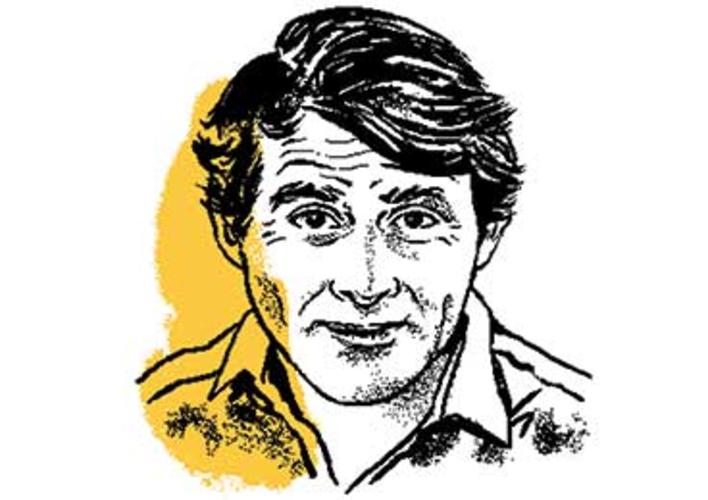

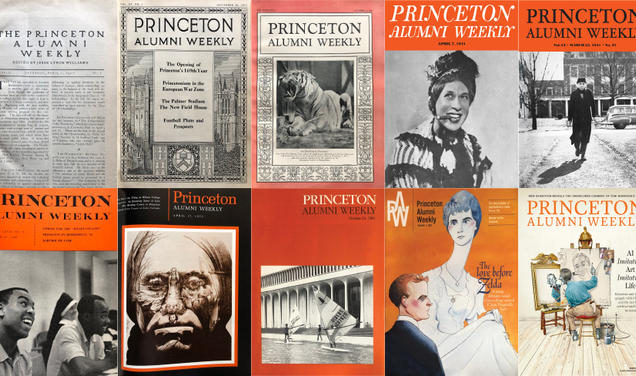
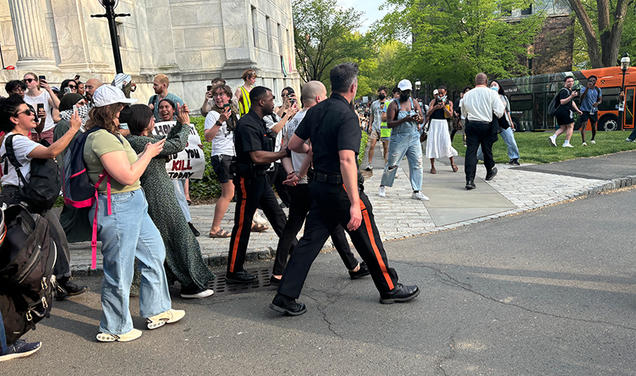
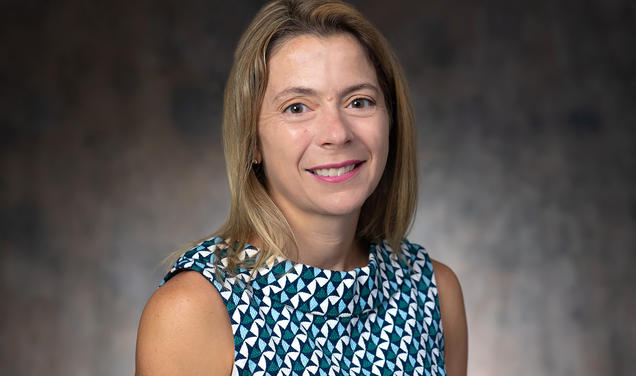

7 Responses
Steven Jay Feldman ’68
4 Years AgoTwo alumni wrote letters in the Oct. 23 issue mentioning how they went to 185 Nassau Street when it was the Nassau Street Elementary School. However, before the current Princeton High School on Moore Street was built in 1929, my father, Mortimer Feldman ’29, attended 185 Nassau Street when it was the old Princeton High School.
Editor’s note: Feldman also provided information from the Historical Society of Princeton, which included the following. “In 1898, Princeton High School was started in the Model School [at 185 Nassau St.] with four 9th grade students. … A new junior and senior high school building was designed in 1927 for a new campus location at 151 Moore Street.”
Jim Floyd ’69
4 Years Ago(The following is an expanded version of a letter published in the Oct. 23, 2019, issue)
There are a very few of us alums for whom “Remembering 185” (feature, June 5) provides a different reminiscence. The same building, prior to the University’s purchase and some renovation, had been our Nassau Street Elementary School, and decades later housed a Princeton University class experience.
I still recall when I was about 4 and my grandfather, George Reeves, held my hand as he walked me to my first day of “morning kindergarten” at the Nassau St. School, before continuing on to his job as the steward of Tower Club (1906-1952). I was there for seven years through grade five and knew the building well.
Decades later, in my junior year at the University, I found myself there again, taking what was probably one of the first computer courses just across the hall from my first-grade class. I doubt that I had walked in those spaces during the intervening years, but I immediately noted that the same wall clocks with Roman numerals remained, and the water fountains were still at elementary-school-age height. But in my older eyes the hallways were somehow much smaller, though the same in appearance.
And now, 50 years after my University graduation, I occasionally return to “185” for events and can’t help trying to recapture who and what was there in my 6-year-old’s mind. Our old gym has become a theater, with the former upstairs track remaining in place. It will always really be Nassau Street School.
Regan Kerney ’68
4 Years AgoThere are not many of us who are going to be able to recall these experiences. I had Mrs. Forsbeck in first grade. The classroom was on the second floor right above the room where I had kindergarten with Mrs. Potter. Then, either my junior year or senior at Princeton, I took a course called Oriental Studies 332, I think. It was Chinese institutional history and the course was filled with graduate students, and the professor was the amazing and legendary James T.C. Liu.
It was in the exact same classroom where Mrs. Forsbeck had taught us how to write our first words of English – except now I was studying Chinese philosophy and using Chinese characters to delve into its meaning. Same exact room – it was astonishing. As we probed into Confucian philosophy, I would sit there and wonder, what would Mrs. Forsbeck think? Or Mrs. Potter? Or Mrs. Isaacson? Or Mrs. Penrose? Or Nurse Kaplan?
Yina Moore ’79
4 Years Ago(The following is an expanded version of a letter published in the Oct. 23, 2019, issue)
The ties that bind some Tigers indeed run deeper within the building now known as 185 Nassau. Jim Floyd ’69, Regan Kerney ’68, and I felt fortunate to have attended the grand Nassau Street School, and each of us were blessed to have had the renowned Mrs. Potter as our kindergarten teacher!
Mrs. Potter, an older African American woman, had been a much revered teacher in the once-segregated Princeton schools. From her ground floor, left side door, morning kindergarten class, she recommended to Principal Loomis (wife of the First National Bank of Princeton president), my promotion to the third grade. Several years later, Thomas Moore, vice president of the school board and my father, negotiated the sale of the building to the University.
Princeton was all-male when I attended Nassau Street School, so who knew that I would have a sociology class at 185 as a freshman? I would often pop in to visit our former gym where Joe Brown, the renowned sculptor, had a two-story piece in the works facilitated by his use of what was once our mezzanine track and the ropes that hung from the ceiling for our Presidential fitness test. When I met Toni Morrison years later at her office, she was situated in the former offices of Mrs. Kaplan and Mrs. Hoagland, our school nurses. We visited her Atelier on Olden Avenue and she invited my then 10-year-old daughter to come to her office after the reception in our old school yard/playground – the small terrace outside of her office before you get to the parking lot.
My other memory was attending a performance at the Jimmy Stewart Theater in the late ’90s, during which Princeton experienced its first armed bank robbery. It was crazy, as I am sure you can imagine. The police had just killed the robber with a single bullet while he held a hostage with a gun to her head in front of the elevator of the now-Santander Bank.
The performance was over and we thought we’d get some ice cream at Thomas Sweet. The theatergoers poured out unknowingly into a lockdown situation with flashing lights and sirens. The chase was on for an accomplice through the streets of downtown. t was a circuitous ride from 185 to Green Street, where the word was out that he had been seen between the Baptist Church and the Dorothea House. So, we couldn’t get home either! It was an hour sitting in the car with our friends in another very active scene, with helicopter lights sweeping the landscape.
Thank you so much for the opportunity to share my experiences at the building. They are, after all, very special.
Norman Ravitch *62
5 Years AgoThe problem in writing about what you know is that no one may care. If they do, you may be too ordinary and too much like everyone else to matter. If you are unique or at least a rare bird, no one may bother reading you.
I'd prefer to say: Write What You Want.
David Portillo ’84
5 Years AgoThank you, Tom. I wish I'd thought of visiting 185 again during Reunions. I'd forgotten its feel, but now I can clearly recall the aroma of mimeographed first drafts!
Russell Banks poo-pooed our attempts at fine writing. He pushed us to share at least "one real emotion" in a story, even if roughly conveyed. He was candid in critiquing his own early published work, admitting to us that he had first favored polish over "truth."
I think of him when I read. I recall his words when I struggle to be authentic.
Joel Deitch ’84
5 Years AgoI greatly enjoyed seeing 185 Nassau featured in the June 5 issue. I took one creative writing class there, which was a wonderful experience. However, that grand old building housed far more than the Creative Writing Program. Visual arts and theater and dance also made 185 Nassau their home, and these programs also deserve recognition.
As with creative writing, both of these certificate programs nurtured artistically inclined students, taught by leading artists. In my year alone (1984), visual arts graduated eight students, including internationally renowned talents such as Mary Weatherford, Dave Maisel, and Accra Shepp. Our instructors included Emmet Gowin, Sean Scully, and Jim Seawright, among many others. Many nondepartmental Tigers also enriched their creativity and appreciation for the arts through these programs.
In short, 185 Nassau was — and remains — a unique haven for the creative arts at Princeton, even if it is a bit off the beaten path. Please consider a more in-depth feature on this underappreciated treasure for a future issue.